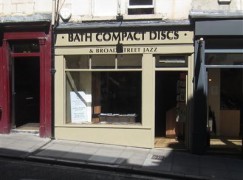Met musicians challenge NY Times figures
mainIn a response to today’s wishy-washy editorial, urging both sides to compromise in forthcoming talks, musicians of the Metropolitan Opera Orchestra say the New York Times was quoting salary figures that Peter Gelb had refused to release to them – and which are, therefore, unsubstantiated.
Full statement follows. See also How Met musicians left Gelb for dead.

NEW YORK, NY—Monday, June 23, 2014—The MET Orchestra Musicians and Local 802, American Federation of Musicians, are deeply concerned about the future of the Metropolitan Opera.
Regarding today’s editorial in the New York Times, The MET Orchestra would like to clarify a few important points:
- The Met musicians are paid a competitive contract, a yearly salary that is commensurate with attracting and retaining the best players in the world. The musicians in fact do not have 16 weeks of vacation. Their guaranteed time off is equivalent to that of their peer orchestras (10 weeks), and is in part due to the recognition that they are at the disposal of the Met to perform 6 days a week during the season. Unutilized weeks are due to Peter Gelb’s unpopular and counter-productive decision to end the beloved weeks of free summer concerts in New York City’s parks, which musicians still wish to play (and besides being a wonderful amenity for New Yorkers and visitors are a proven vehicle to expand the opera audience), as well as Gelb’s termination of the practice of touring, which has been a part of the Met season since its inception and also develops tourist audiences for the Met
- Peter Gelb insists on citing an average salary number for musicians that has not been substantiated. The musicians and their legal team have been asking for months for the Met to provide figures showing where they are getting this average salary number, as well as the amount of stated benefits, but the Met has not provided it. We do not know if the Met provided proof to the Times, and we respectfully request that any press covering these matters ask Gelb for documentation to support this disputed figure. Furthermore, we ask that the press consider citing the median salary for the musicians, as this would more accurately represent what most musicians at the Met are paid – if you can get the data from management!
- It is true, as the New York Times states, that The Met cannot continue on its present fiscal course. However, it is relevant to note that over Gelb’s tenure the cost of musician labor has risen only modestly (slightly above inflation), while the non-labor budget increased by 50% ($105 Million). As the musicians pointed out in theirreport to the Met Opera Board the revivals of Peter Gelb’s new productions, which have sold dismally, are pulling revenues down. In fact, when other opera houses around the world are thriving, there has been a 13% drop at the Met box office on Peter Gelb’s watch.
- Given that last year the Met reported a $2.8 Million dollar deficit why does Gelb claim he needs $30 million in cuts (16%) to performers who are already being paid less than musicians in several other U.S. orchestras, in some cases in absolute dollars or, when calculating the cost-of-living to compensation ratio, less than their counterparts at most peer orchestras? Also, importantly, research conducted by the Orchestra indicates that the various cuts that Gelb has proposed actually constitute a reduction in compensation much greater than 16%, but in fact would constitute a 25-37% reduction in compensation.





Comments